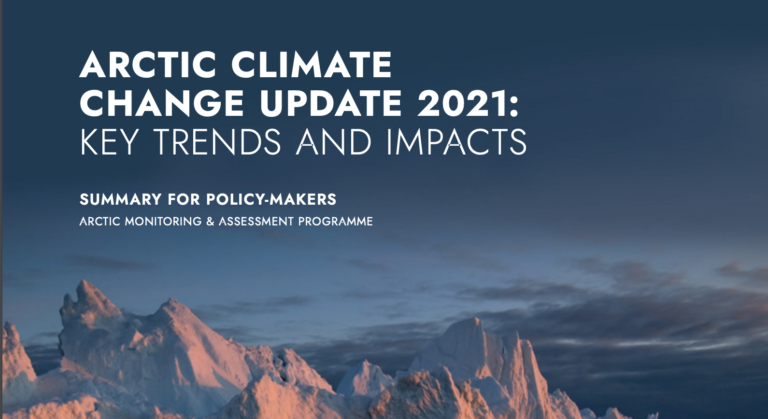The Arctic Monitoring and Assessment Programme (AMAP) has revealed that the increase in Arctic average surface temperature between 1979 and 2019 was three times higher than the global average during this period. This is higher than previously reported.
The findings were included in the Arctic Climate Change Update 2021: Key Trends and Impacts report presented at the Arctic Council meeting in Reykjavik, Iceland, on May 20.
The meeting outlined a strategic plan with three key goals, reaffirming the council’s commitment to a peaceful, prosperous and sustainable Arctic region. The three goals are: Arctic Climate, Healthy and Resilient Arctic Ecosystems, and Healthy Arctic Marine Environment.
For the Arctic Climate, the aim is to monitor, assess and highlight the impacts of climate change in the Arctic to encourage compliance with the Paris Agreement and support stronger global measures to reduce greenhouse gases and short-lived climate pollutants, while strengthening circumpolar cooperation on climate science and observations.
For the Healthy and Resilient Arctic Ecosystems the aim is to promote pollution prevention, monitoring, assessment, conservation and protection of Arctic biodiversity, ecosystems and species habitats, based on best available science, and respecting the importance of sustainable development for all current and future generations of Arctic inhabitants.
And for the Healthy Arctic Marine Environment the aim is to promote conservation and sustainable use of the Arctic marine environment for the benefit of all current and future generations of Arctic inhabitants, encourage safety at sea, prevention of marine pollution and cooperate to improve knowledge of the Arctic marine environment.
The ministerial session marked the end of the two-year Icelandic Chairmanship of the Arctic Council and the beginning of the Russian Federation’s Chairmanship for the years 2021-2023.
To read the full story, and access the report, click here.
AMAP key findings 2021 video:



